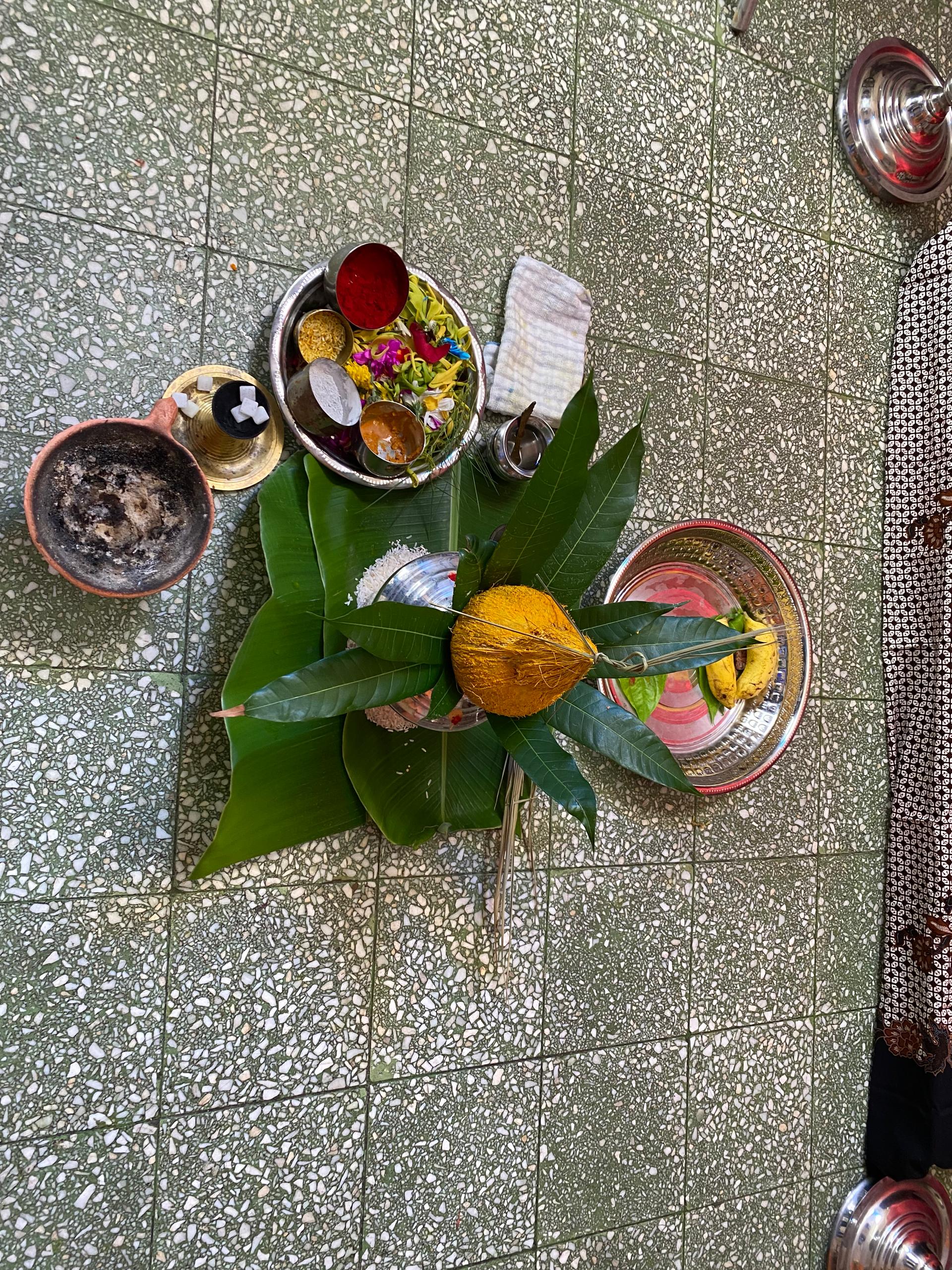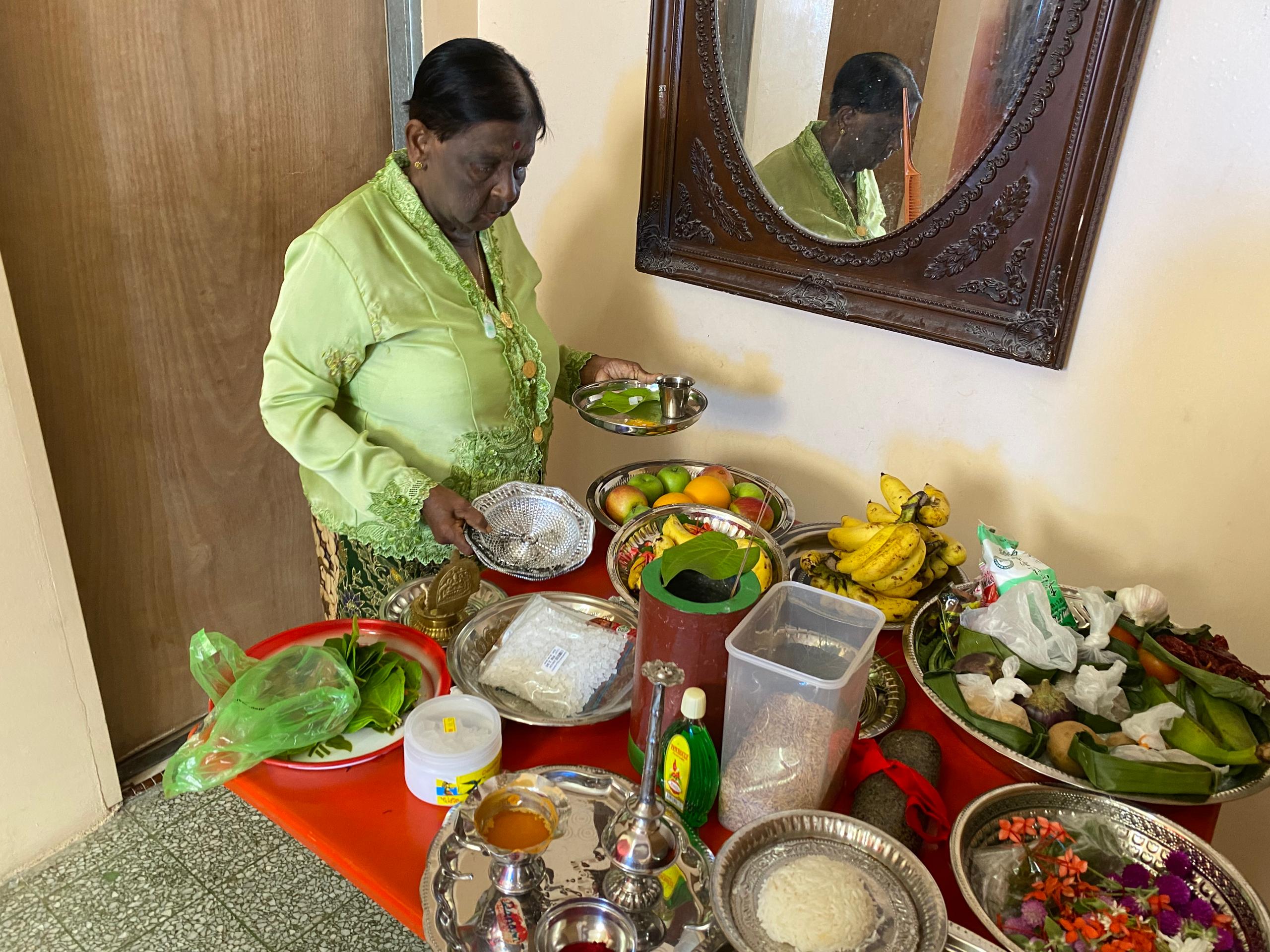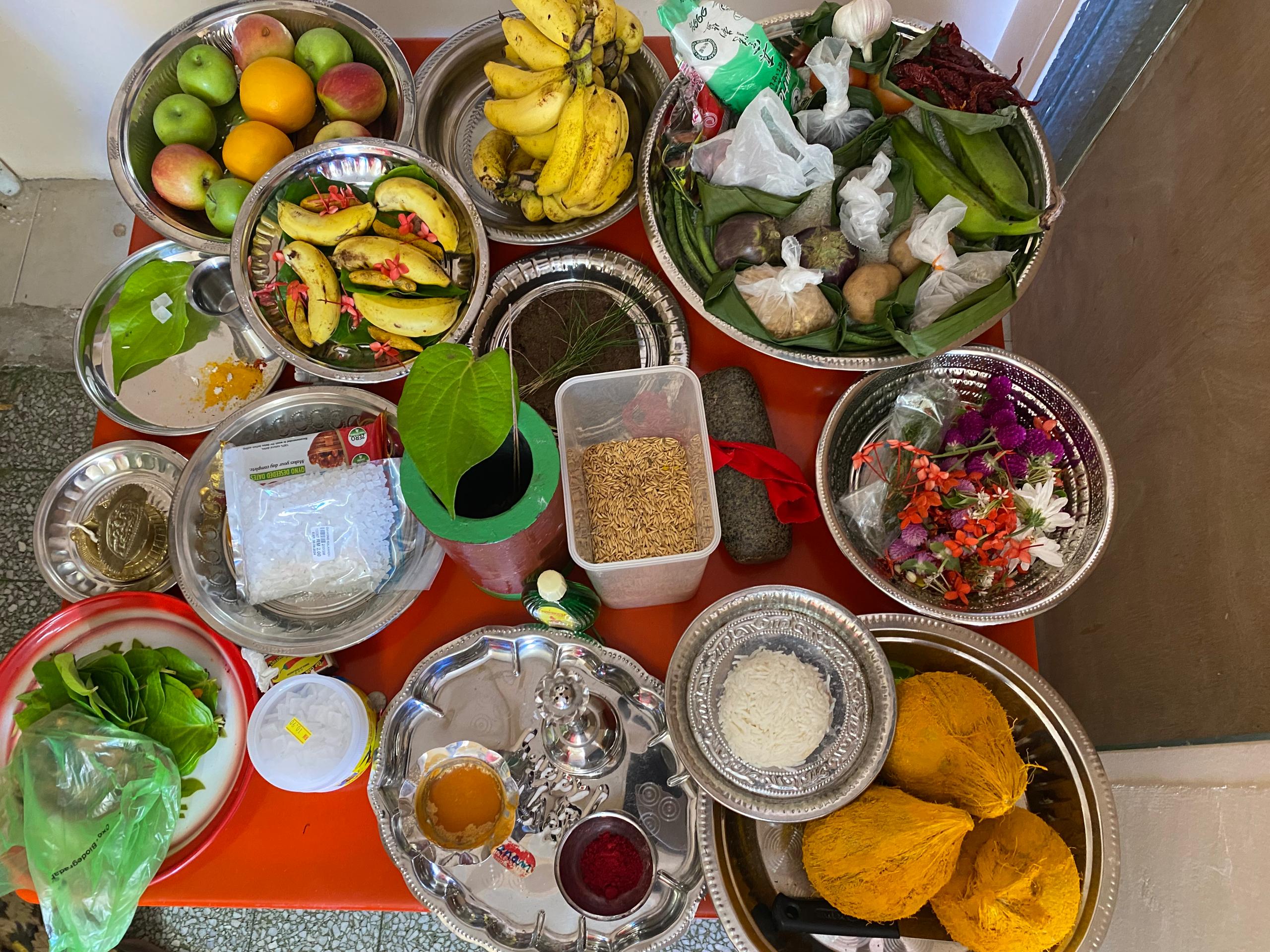ARTS AND CULTURE INFORMATION GATEWAY
Immerse yourself in the colorful world of art and culture! From traditional heritage to contemporary works, discover uniqueness that reflects the nation's identity and identity
ADAT RESAM DAN BUDAYA MASYARAKAT CHETTI MELAKA: SADANGGU ATAU SADENGGU
Picture
4
Video
Available
Today's Visitor
19
Number of Visitors
140
Introduction and history
The Adat Sadanggu, also referred to as Sadunggu, Sadenggu, or Sandanggu, is a significant rite of passage practiced by the Chetti community of Melaka. This ceremonial tradition is specifically observed for young girls upon experiencing their first menstruation, marking the critical transition from childhood to maidenhood. Deeply embedded in ritual, spirituality, and communal cohesion, the practice continues to be upheld as a symbolic act of reverence for ancestral customs passed down through generations.
Believed to have been practiced for over two centuries, the Sadanggu custom traces its origins to the early settlement of the Chetti people in Melaka. This unique community emerged from the intermarriage between South Indian traders, predominantly Tamil, and local Malay women during the Malacca Sultanate in the 15th century. Although the ceremonial expressions of Sadanggu have evolved, its fundamental purpose remains intact: to formally acknowledge and sanctify a girl's coming of age within the community.
Transmitted primarily through oral tradition and familial practice, Sadanggu continues to be actively performed within the Chetti enclave of Kampung Chetti, Gajah Berang, Melaka. According to Chetti belief, a girl undergoing her first menstruation enters a state of spiritual impurity and heightened vulnerability to malevolent forces. As a result, she is confined to her room for 16 days and is strictly prohibited from leaving the house, attending school, or visiting temples. During this seclusion, the family refrains from entering places of worship, and visits from outsiders are discouraged, as such interactions are believed to risk spiritual contamination.
Thus, Sadanggu transcends its role as a mere rite of passage; it serves as a profound manifestation of the Chetti community’s cultural and spiritual identity. The ritual embodies a rich tapestry of symbolism, aesthetics, and collective values, illustrating how tradition, belief, and community interweave to nurture the identity and womanhood of their daughters.
The core function of the Sadanggu custom is to serve as a ritual of both spiritual and physical purification for a girl who has experienced her first menstruation—a pivotal moment marking the onset of womanhood. In Chetti belief systems, the first menstrual cycle is regarded as a transitional phase that introduces a state of “impurity” or “uncleanness,” not only in the physical sense but also in the spiritual realm. Consequently, the girl undergoes a period of seclusion, during which she observes strict taboos, culminating in the mandi restu (bathing of blessing), a symbolic act of cleansing and renewal.
This purification phase is deemed crucial to expel negative energies, protect the girl from malevolent spiritual disturbances, and prepare her—both spiritually and socially—for her new identity. The Sadanggu rite thus marks a transformative milestone in her life, formally acknowledging her elevated status within the community. It affirms her readiness to embrace the roles and responsibilities of adulthood, while simultaneously reinforcing her position as a “purified” woman in the eyes of her family and society.
During the Sadanggu ceremony, the girl participating in the ritual wears two distinct sets of attire. The first ensemble is worn during the mandi restu, a ceremonial blessing bath that signifies the initial phase of the rite. The second outfit is worn upon the completion of the ritual, symbolizing her transition and the fulfillment of the sacred process.
In the early phase of the Sadanggu ceremony, the girl wears a baju kurung pesak in white—a traditional Malay outfit symbolizing purity and a fresh beginning in a young woman’s life. The ensemble is typically paired with a batik sarong, reflecting the cultural heritage of the local community. Her hair is neatly styled in a traditional bun, representing modesty and the timeless elegance associated with maidenhood.
Following the ritual bathing (mandi restu), the girl changes into a long kebaya, signifying her transition into womanhood and readiness to embrace adult responsibilities. This kebaya is often embellished with intricate embroidery, highlighting the refined artistry and cultural values of the Chetti community. In contemporary practice, some girls may choose alternative attire such as the Nyonya kebaya, long dresses, or even a sari, reflecting personal or familial preferences.
To complete the ceremonial appearance, several traditional accessories are worn. A hairpin (cucuk sanggul) secures the bun, while a set of three brooches (kerongsang) is typically fastened onto the kebaya or its modern alternatives. The most essential and mandatory accessory is the Silambu, an anklet usually crafted from silver or gold, adorned with traditional motifs and imbued with deep symbolic meaning. Each element of the attire and adornments reflects the Chetti community’s values—purity, beauty, and cultural continuity—infusing the ceremony with profound cultural and aesthetic significance.
The tools and materials used in the Sadanggu ceremony are meticulously prepared and arranged according to the specific stages of the ritual. Each item carries symbolic, spiritual, or functional significance, contributing to the overall sanctity, meaning, and successful completion of the rite. These ceremonial elements not only facilitate the ritual processes but also reflect the cultural values and cosmological beliefs of the Chetti community. The following section outlines the key materials and their respective roles throughout the different phases of the Sadanggu ceremony:
Bathing Area
The Sadanggu ceremony unfolds through a series of structured, symbol-laden stages, each deeply rooted in the cultural and spiritual traditions of the Chetti community. It serves not only as a personal rite of passage but also as a communal expression of identity, continuity, and reverence for ancestral customs. The ritual begins with a phase of spiritual cleansing and culminates in the communal recognition of the girl's transformation into womanhood. Each stage is carried out in a deliberate sequence and is performed within the intimate setting of family and close community members, ensuring that the ceremony retains its sacredness and cultural integrity. The following outlines the step-by-step procedures of the Sadanggu ceremony, as practiced traditionally:
Stage One: Ritual Bathing (Mandi Restu)
The Sadanggu ceremony traditionally begins at dawn, a time symbolizing spiritual awakening, renewal, and the emergence of a new phase in life. Its primary objective is to cleanse the girl of spiritual impurities, misfortunes, and unseen disturbances believed to accompany the onset of menstruation. Before the bathing ritual commences, the girl's face and hands are gently anointed with sandalwood powder—an act symbolizing inner peace, serenity, and spiritual purification.
The ceremonial bathwater is prepared as a sacred blend of turmeric water, rose water, and seven selected fragrant flowers, each chosen for their symbolic properties of healing and blessing. The bathing itself is carried out by an odd number of female relatives, typically five, seven, or nine women, comprising both maternal (Mama) and paternal (Ateh) aunts. Using a small ceremonial dipper (cumbu), each woman takes turns pouring water over the girl's right shoulder, left shoulder, and head, in three rounds of blessings.
During the ritual, the girl is dressed in a white Baju Kurung Teluk Belanga and her hair is styled in a traditional bun, reflecting modesty, purity, and cultural identity. Upon completion of the ritual, the ceremonial attire is discarded, a symbolic act of casting away all spiritual negativity and marking the girl's transformation into a new state of being.
Stage Two: Traditional Sweet Offering
Following the purification ritual, the second stage of the Sadanggu ceremony involves the presentation of putu piring kosong, a traditional Chetti delicacy made from steamed rice flour. This simple yet meaningful sweet is served to the girl as a symbol of gratitude and spiritual fulfillment. The act honors the sacred transition she has just experienced and serves as a gesture of thanksgiving for her safe passage into maidenhood. The absence of filling in the putu piring reflects humility and purity, while its soft texture and gentle preparation process signify tenderness and care during this pivotal moment of transformation.
Stage Three: Main Sadanggu Ceremony
In the central phase of the Sadanggu ceremony, the girl is ceremonially adorned in the manner of a bride, symbolizing her transition into womanhood and readiness to assume adult responsibilities. Her hair is styled into an elegant bun (sanggul), embellished with fresh flowers and complemented by traditional jewelry, including necklaces and bracelets. She is then seated on a beautifully draped bench, lined with cloth and uncooked rice grains—a symbol of fertility, abundance, and the continuity of lineage.
At this stage, ritual items for the memusing (circling) ceremony are meticulously arranged by family members. These include trays containing rice, water, dried cow dung (representing earth and purification), oil lamps (signifying divine light), grains, putu piring, bread, and a grinding stone wrapped in red cloth (symbolizing feminine strength). The memusing is performed by a senior female relative, who encircles the girl while holding these symbolic items, enacting gestures meant to protect, bless, and spiritually fortify her.
In addition, relatives from both the paternal and maternal sides present hantaran (ceremonial gifts), which may include saris, cosmetics, jewelry, flower garlands (malai), combs, mirrors, turmeric, and fresh fruits. These offerings represent familial support, affection, and blessings as the girl is welcomed into her new social role within the community. This stage affirms her transformation and symbolizes communal recognition of her elevated status as a young woman.
Stage Four: Chanting of Purification Mantras
This solemn stage is presided over by a Pandaram, a ritual specialist or religious figure who recites sacred mantras intended for spiritual purification and divine protection. The chanting is performed in the presence of ritual items carefully arranged on a ceremonial tray, which includes rose water, kumkuma (red turmeric powder), santanam (sandalwood paste), oil lamps, cumbu water, sacred grass, cupak (a traditional container), betel leaves skewered on sticks, five pieces of bread, uncooked rice, a grinding stone, and five pieces of putu.
The memusing (ritual circling) is initiated at this stage, beginning with the participation of the Mama and Ateh (maternal and paternal aunts) followed by other attending family members and guests. The encircling is performed in five rounds: three in front and two behind the girl, symbolizing complete spiritual enclosure and protection. This ritual motion serves to bless, cleanse, and strengthen the girl as she moves fully into her new role.
Following the chanting, three selected adult women prepare and apply additional ritual elements, including lime water mixed with turmeric, trays of betel leaves, and sudem (traditional marking material). These are used to mark the girl’s forehead with a symbolic pottu (dot), signifying the sealing of her spiritual purity and maturity. The water used throughout the ritual is then discarded outside the ceremonial space, a meaningful act symbolizing the expulsion of impurities and the removal of negative energies from her life.
Stage Five: Presentation of Gifts
Once the circling ritual is complete, the ceremonial gifts are formally presented to the girl. She must wear the gifted sari immediately. If more than one sari is presented (typically five), she is expected to change into each one sequentially. The malai flower garland is placed across her shoulders by her maternal and paternal uncles as a sign that she remains unmarried.
Tanapakiam A/P Ratnasamy
Punisha A/P Arunaghiri Pathair
Reference Source
Bahan Bacaan
Dhoraisingam, S. S. (2006). Peranakan Indians of Singapore and Melaka: Indian Babas and Nonyas - Chitty Melaka. http://ci.nii.ac.jp/ncid/BA75919650
Moorthy, R. (2020). The evolution of the chitty community of Melaka. Jebat: Malaysian Journal of History, Politics & Strategic Studies, 36. https://ejournals.ukm.my/jebat/article/download/42235/10979
Moorthy, R. (2021). Hybridity and ethnic invisibility of the “Chitty” heritage community of Melaka. Heritage, 4(2), 554–566. https://doi.org/10.3390/heritage4020033
Raghavan, R. (1977). Ethno-racial marginality in West Malaysia: The case of the Peranakan Hindu Melaka or Malaccan Chitty community. Journal of the Humanities and Social Sciences of Southeast Asia, 133(4), 438–458. https://doi.org/10.1163/22134379-90002605
Shukri, S. H. B. M. (2022). Ritual Dalam Adat Sedanggu Bagi Meraikan Fasa Peralihan Hidup Anak Perempuan Dalam Masyarakat Chitti Di Perkampungan Chitti, Melaka (Tesis Doktor Falsafah).
Tokoh (jika ada temu bual tokoh)
Tanapakiam A/P Ratnasamy. (2024). Tokoh Adat Masyarakat Chetti. Temubual pada 8 September 2024.
Punisha A/P Arunaghiri Pathair. (2024). Pewaris Adat Masyarakat Chetti. Temubual pada 8 September 2024.
Location
State JKKN Contact Information
Nur Al-Farani binti Rosli
Cultural Officer
Jabatan Kebudayaan dan Kesenian Negara, Melaka
Kompleks JKKN Melaka
Hang Tuah Jaya, Lebuh Ayer Keroh,
75450 MELAKA
06 - 763 6308
Use the form below to contact the Informant/Figure/Editor/Researcher directly. We will respond to your inquiry as soon as possible!











